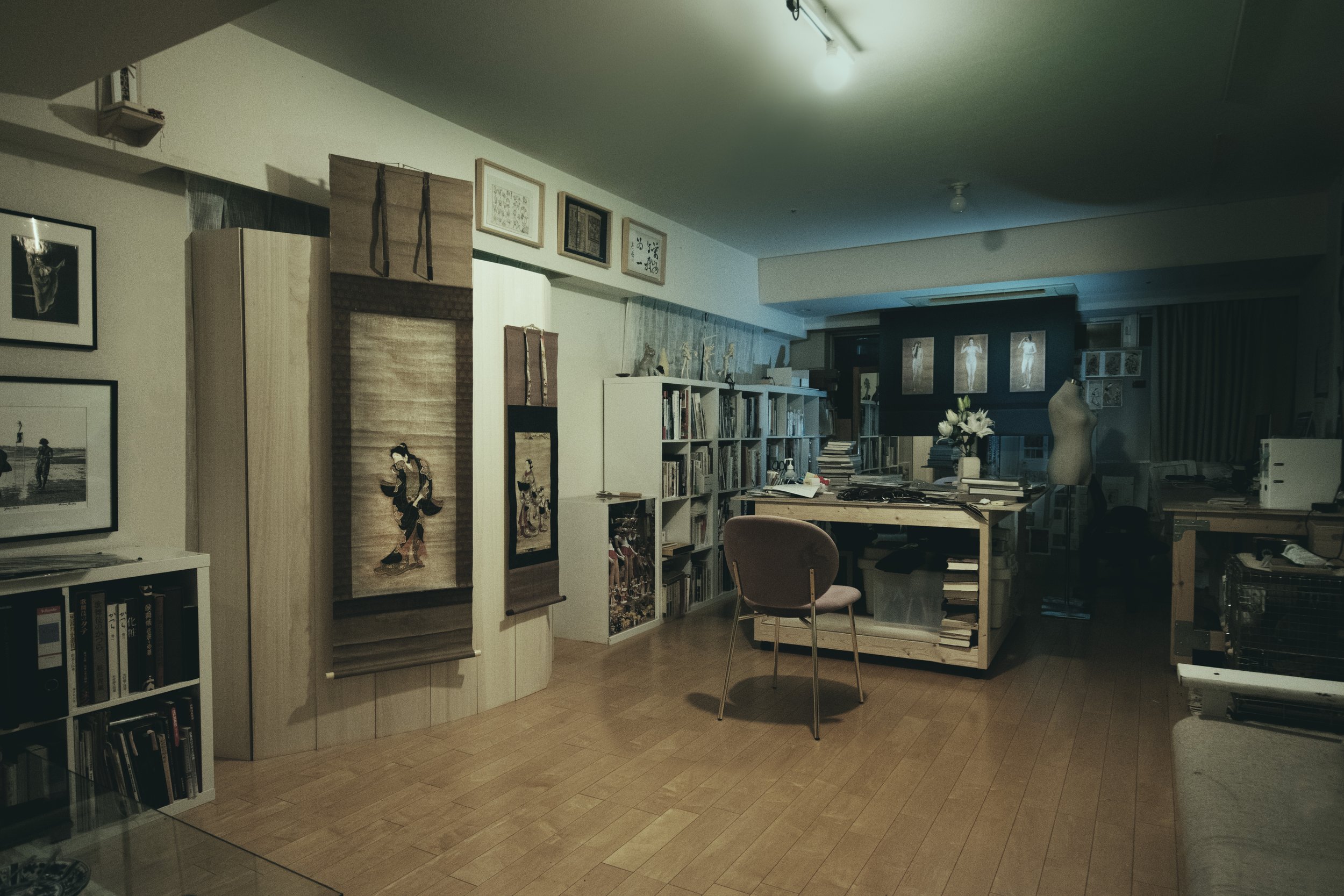Born into an ordinary family (not from a bloodline of dancers passed down since the Edo period), I began learning classical dance at age 4, and over 30 years have passed since. My motivation for collecting is deeply personal—seeking a sense of belonging and emotional healing. From as early as I can remember, I was drawn to performing the art of “onnagata” (female forms) in kabuki dance and naturally, for me, most of what I have collected revolves around it. The collection spans works from the 17th to the 21st century. While I call it a “collection,” I understand that the finest pieces are likely preserved in various museums and private collections. But to me, it is a shining beacon of hope for the future. We will gradually begin sharing a personal collection with the world.ーRanshou Fujima
一般家庭にうまれ、4歳から古典舞踊を学び始め、早くも30年余りの時が経ちました。収集の動機には、自分の居場所の確認、心の癒しなど極めて個人的なものです。物心ついたときには「女形」を踊るのが好きで、集めているものも、私にとっては女形に関するものばかりになりました。17世紀のものから21世紀のものまで様々です。コレクションと名づけてはいますが、より状態がよいものは美術館やコレクターの皆様がお持ちと思います。ですが、私にとっては、これらは未来に導いてくれる煌めく光です。これから少しずつ公開していきたいと考えていますー藤間蘭翔
RANSHOU ARCHIVES & COLLECTION
Ranshou Archives & Collection has built a collection of objects and documents through various acquisitions, gifts, and deposits for the purpose of preservation and furthering research in the following principal areas:
- Objects and documents relating to kabuki dance, with a particular interest in the early onnagata (1700s-1800s).
- Objects and documents at the intersection of kabuki dance and other art forms, such as ukiyo-e or painting.
- Objects and documents relating to women and their relationship with society throughout history, as well as the aesthetic standards of the time.
- Objects and documents illustrating the power and humanity of women.
Yoshino Tayū, Takao Tayū, and Yūgiri Tayū were perhaps the most renowned women of Japan’s early modern period, which is why they are featured as protagonists in several classical kabuki plays and dances, including Takao Sange. Tayū (太夫) are the highest class of traditional entertainers in Japan. They are multitalented performers who are trained from a young age in song, dance, poetry, calligraphy, musical instruments, conversation, etc. Despite this, they are often described in English texts as simply "courtesans"―praised for their beauty and seductiveness, while their other skills are largely overlooked. A Western counterpart would be Phryne, an ancient Greek hetaira who is most known for her stunning looks despite also being a witty writer who socialized with the Athens’ philosophers. In addition, Tayū are often mistakenly conflated with keisei (傾城), yūjo (遊女), and oiran (花魁), despite the fact that they do not engage in sex work due to their high rank.
For example, Yoshino Tayū was a highly educated, independent woman who mastered everything from Japanese tea ceremony and flower arrangement to painting and the game of Go. The esteemed poet Ihara Saikaku portrayed her in his novel The Life of an Amorous Man, and early onnagata grandmasters like Yoshizawa Ayame, Segawa Kikunojō, and Nakamura Tomijūrō even tried to imitate her in daily life. It is said that she ran in the same cultural and creative circles as Hon’ami Kōetsu (本阿弥光悦), the founder of the Rinpa school of painting (琳派). Perhaps now is the time to shift our focus to these women’s intellect and artistry, which have historically been neglected or ignored.
This record is nowhere near comprehensive, and we hope it will be enriched by your contributions. If you have any relevant information or materials, please feel free to contact us.
Lyric score: Back Face (Nagauta-shohon: Ushiromen from Yanagi ni hina shochō no saezuri | 長唄正本: うしろ面, 柳雛諸鳥囀), 1762
Segawa Kikunojō II at Ichimuraza Theatre (二代目瀬川菊之丞, 市村座)
Kawarazaki-za theatere programme: The Six Immortal Poets (Ehon banzuke: Okkasen | 絵本番付 六歌仙, 河原崎座) , 1851
Kawarasakiza Theatre (河原崎座)







